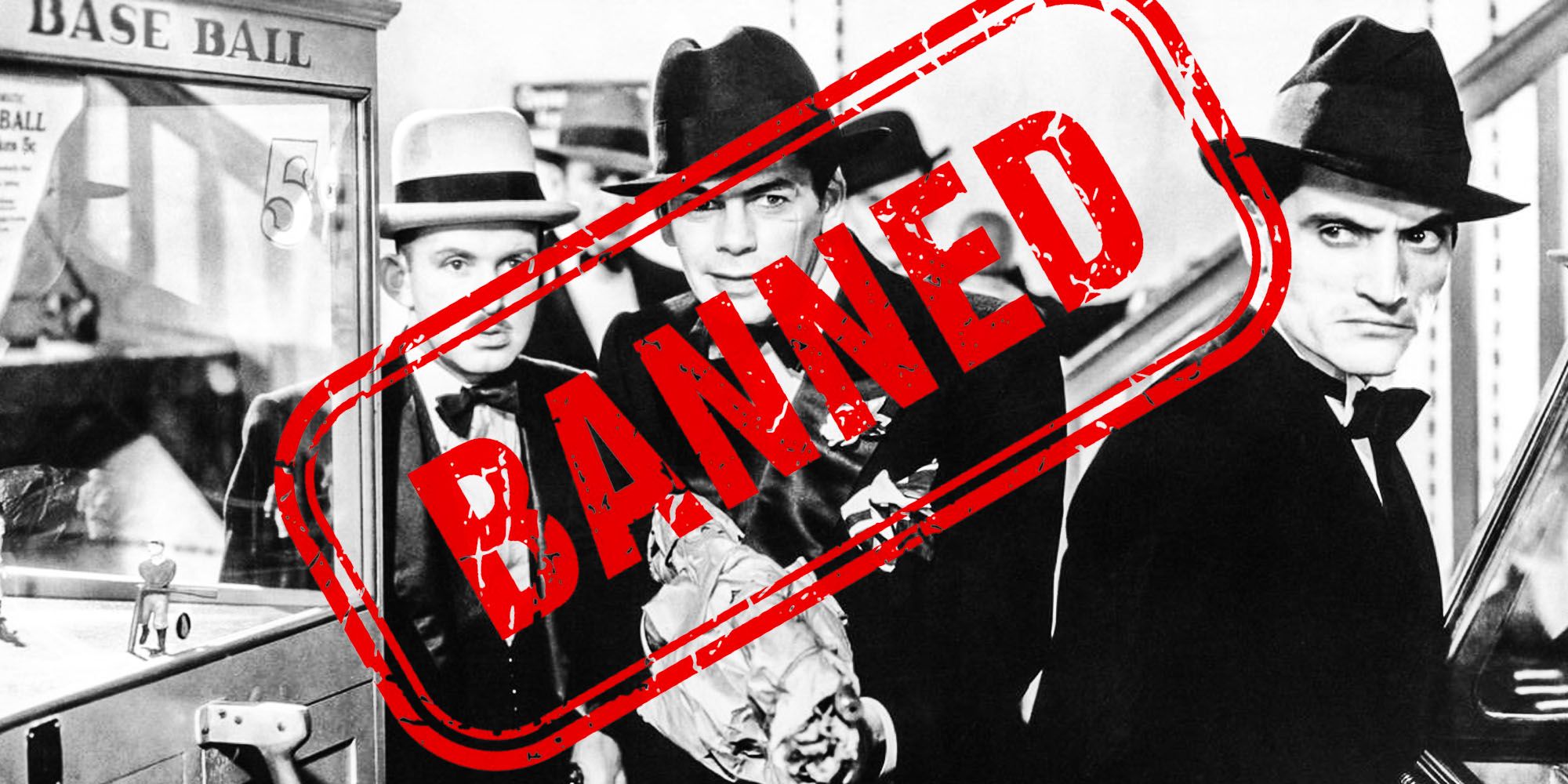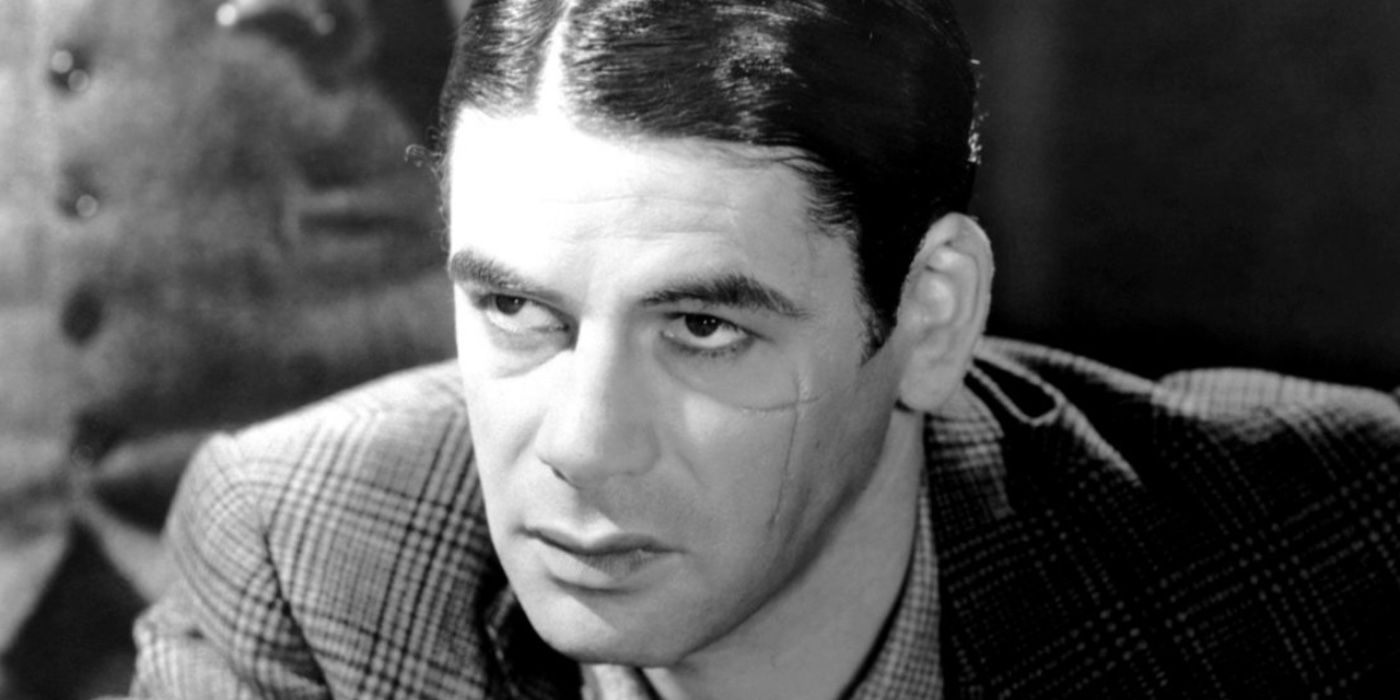The gangster movie that started it all, Scarface (1932) was actually banned in several areas of the United States upon its release. The original Scarface was a project of producer Howard Hughes, whose life was documented in Martin Scorsese’s true story movie The Aviator, and director Howard Hawks, becoming one of the first talkies that dealt with organized crime and had a major Hollywood studio backing it. Scarface (1932) was loosely inspired by the life and criminal activities of notable gangster Al Capone, even directly connecting to the mobster by including his infamous 1929 Saint Valentine’s Day Massacre.
Hawks’ Scarface follows Antonio “Tony” Camonte, a young man who quickly rises through Chicago’s mob scene. While Scarface would go on to be lost in the controversial group of films released in pre-code Hollywood, it would keep a prolonged legacy as one of the greatest gangster films of all time, as well as the movie that would be remade into Tony Montana-centric real life-inspired Scarface (1983) by Brian de Palma, starring Al Pacino in the renamed Tony Camonte role. Gangster movies would become continuously successful in Hollywood following 1972’s Goliath film The Godfather, but 40 years earlier, the mafia content was greeted with much more intense controversy.
The Hays Code, which would become a mandatory guide for Hollywood films in 1934, was already influencing what could be included in movies in 1932. If a film didn’t adhere to its censorship codes, the MPPDA would delay releases, prevent films from being produced, and lobby to remove scenes, though wasn’t able to demand removal of material quite yet. Scarface appeased the code enough to get a swift screening by changing the ending, removing very violent scenes, and adding a prologue to condemn gangsters, but the mafia movie's violent material, like Goodfellas, and protagonist-led crime wouldn’t get it past state and city-wide censorship offices. As a result, states like New York, Ohio, Virginia, Maryland, and Kansas, as well as cities such as Seattle, Detroit, Portland, and Chicago all banned Scarface from being shown.
While Scarface was greeted with much pushback following its release, the Hays Code had already accounted for much of the film’s lessened admiration or violence. Martin Scorsese and Francis Ford Coppola were able to show their protagonist mobsters as ultimately misguided criminals, but Scarface was forbidden to make a character like Tony sympathetic. The Hays Code also required that Scarface be released with an alternative title, The Shame of A Nation, to really advance the idea that the studio wasn’t in support of gangster activities. Today, most viewers anticipate the lead character in a mobster movie, like The Godfather's Michael Corleone, will be an antihero that the director doesn’t necessarily admire, but back in Hollywood's pre-code era, not including a disclosure statement condemning gangster actions was essentially a death sentence for a film that boasted such an amoral focus on illegal activities and criminal characters.
At the time, many in the industry wanted Scarface to be released gruesomely and without overt condemnation to make it reflect real life, but with Hollywood's conservative policies on moral themes, Scarface had to change many of its plotlines that easily would have been included in gangster films today. For example, Scarface's original ending death for Tony was much more similar to Al Pacino’s Spielberg-directed Scarface death scene, with Tony exiting a building to a blazing gunfire shootout with policemen, continuing to fire until running out of ammo and seemingly unfazed by much of the bullets coming his way until finally being killed. Censors felt this version glorified Tony and his criminal empire too much, so it was changed to the less exciting finale where Tony attempts to run away, only to be shot by a policeman and stumble into a gutter. Howard Hughes also believed the original Scarface’s censorship was a political move by corrupt politicians, since one of the first cuts had a politician who publicly condemned the gangsters, but would party and indulge with them in private.


